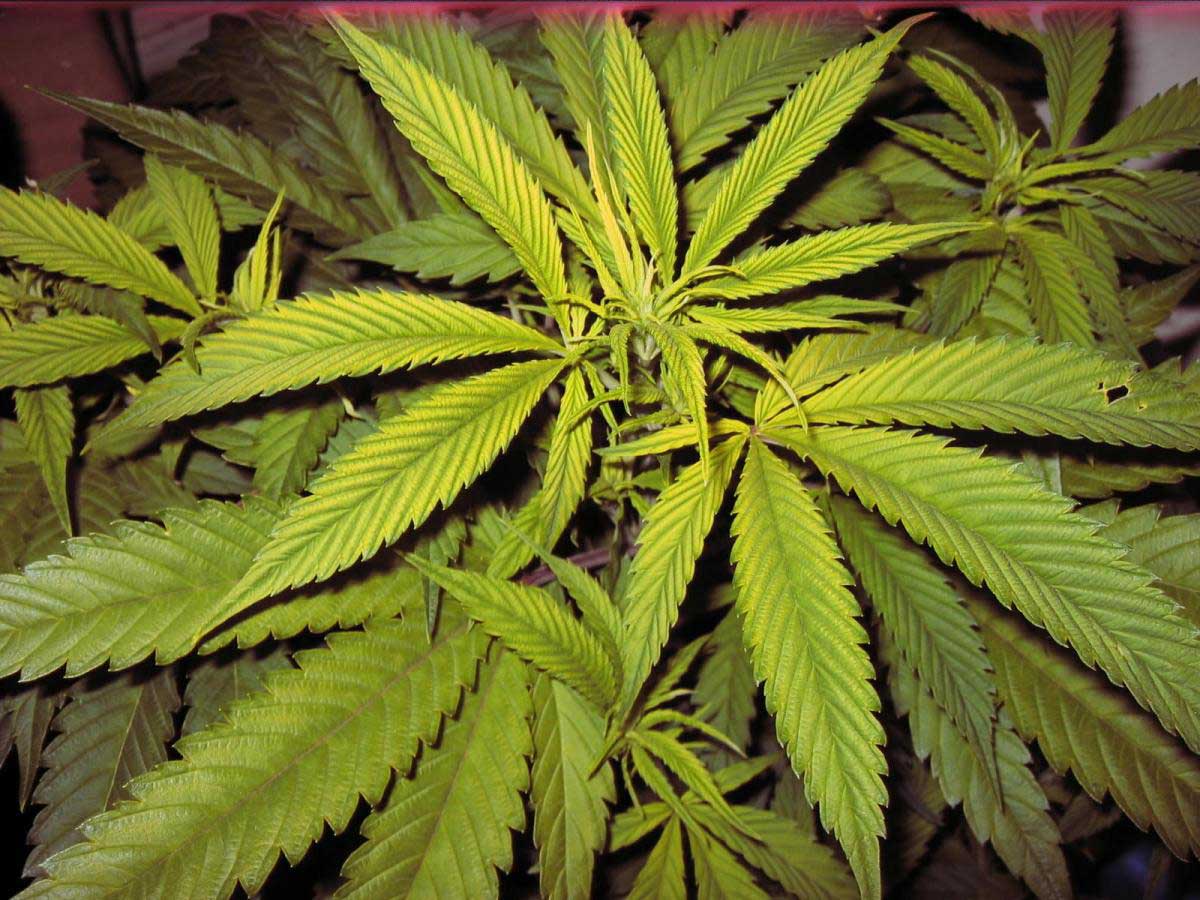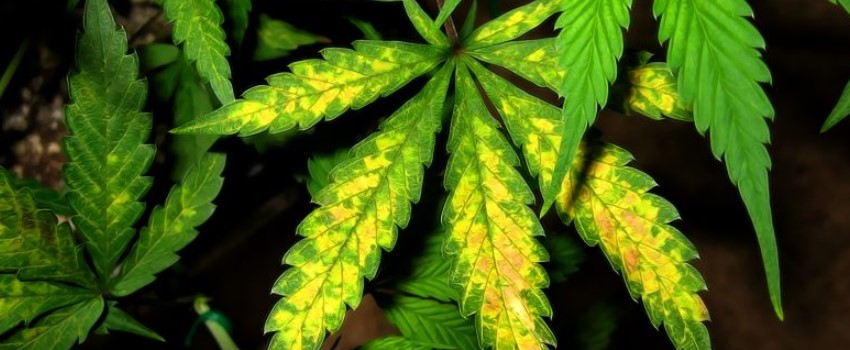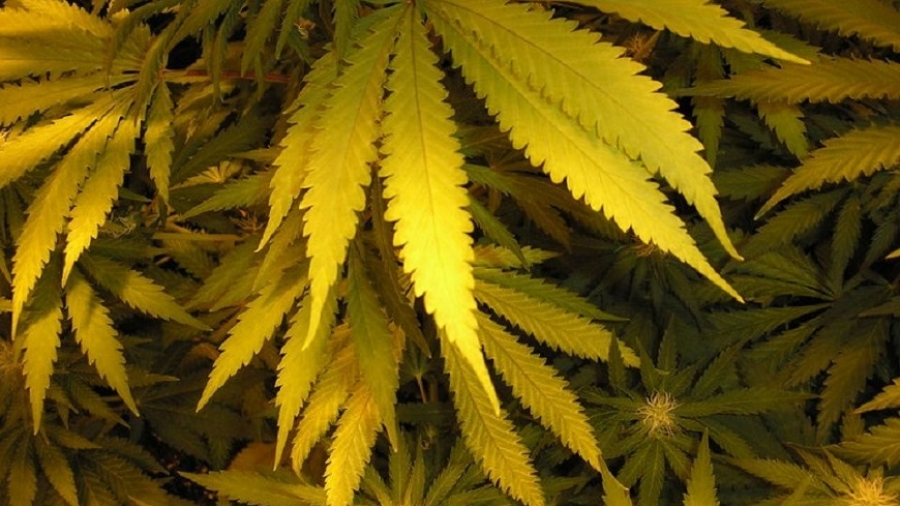From living rooms to landscapes, plants with rich green leaves brighten your day and beautify your world. But sometimes, despite your best efforts, plant leaves turn yellow instead. Known as chlorosis, yellowing happens when something interferes with your plant’s chlorophyll — that’s the plant pigment behind their beautiful green color. The good news is that yellow leaves let you know plants need help. By reading the signs and taking the right steps, you can remedy yellow leaves and prevent their return.

POOR DRAINAGE OR IMPROPER WATERING
Water issues — either too much or too little — are the leading reason behind yellow leaves. In overly wet soil, roots can’t breathe. They suffocate, shut down and stop delivering the water and nutrients plants need. Underwatering, or drought, has a similar effect. With too little water, plants can’t take up essential nutrients. Yellow leaves result.
To fix or prevent water issues, start with porous, well-draining soil. If you grow in containers, choose pots with good drainage holes and keep saucers free of excess water. In your landscape, avoid planting where rainwater or irrigation accumulates. Incorporate organic matter, such as compost, into your soil to improve soil structure and drainage.
Before you water, give soil the “finger test.” Insert your index finger a few inches into the soil. As a general rule, water only when soil feels dry. Then water thoroughly and deeply. If soil feels cool and moist, wait a few days. Always allow soil to dry slightly before you water again.
ROOT DAMAGE OR COMPACTED ROOTS
Root damage happens in many ways, from wayward shovels to root rot and other disease. Once damaged, roots may struggle to deliver what your plant needs. When container plants outgrow their pots, compacted roots result. Outdoors, compacted landscape soil inhibits water, oxygen and nutrient movement. In these cases, roots can’t function properly and problems manifest as yellow leaves.
To check containers for damaged or compacted roots, gently slide your plant out of its pot. (You’ll get an up-close look at soil moisture, too.) Healthy plant roots are whitish yellow. Dark, rotting roots smell foul. If roots are rotten and diseased, it’s time to consider a new plant. If compaction’s the problem, prune unhealthy roots, gently loosen roots and repot in a larger container with well-draining soil.
With landscape plantings, improve soil compaction by aerating your lawn. Incorporate organic matter and organic mulch into your planting sites. Garden gypsum can also improve soil compaction, especially in heavy clay soils, and help keep leaves green.
IMPROPER SOIL PH

If you’re growing container plants and feeding regularly with premium plant fertilizers, soil pH probably isn’t the cause of your plant’s yellow leaves. But if your leaf problem centers on landscape plants, soil pH may be the key.
Soil pH influences whether plants access nutrients. Nutrient availability changes as soil pH moves up or down the pH scale. Most plants, including lawn grasses, do best with soil pH in the neutral to slightly acidic range, near 6.0 to 7.0. “Acid-loving plants” such as rhododendrons and blueberries prefer soil near 4.5 to 6.0 pH.
When soil pH strays lower or higher than a plant’s optimal range, some nutrients become less available to it. Even though nutrients are present, plants can’t take them up — even from fertilizers you add. Leaves turn yellow until pH issues are fixed.
A simple soil test identifies your soil pH and provides other important information. Most testing labs also give recommendations for soil amendments to restore pH balance. Once that happens, nutrients become available again and green leaves are back on track.
LACK OF PROPER NUTRIENTS
When yellow leaves happen where soil pH is ideal, a true nutrient deficiency may exist. Some nutrients are very mobile. Nitrogen, for example, moves through soil easily and leaches away. Unless soil nitrogen is regularly replaced through fertilizer applications, nitrogen deficiencies turn lawns and plant leaves yellow or pale green.
If you suspect nutrient deficiencies, proper fertilization and premium plant foods can help. Your local county extension agent can also shed light on the specific nutrients involved. Identifying which leaves turn yellow first and how the yellowing starts provides clues to common deficiencies1 such as these:
- Nitrogen deficiency shows up as a general yellowing. Older, inner leaves turn yellow first. As it progresses, yellowing moves outward, eventually reaching young leaves, too.
- Potassium deficiency shows itself when leaf edges turn bright yellow, but the inner leaf stays green. Older leaves show symptoms first, and leaf edges soon turn brown.
- Magnesium deficiency starts as yellow patches between leaf veins on older leaves. Veins stay green as yellow moves from the leaf center out. Leaf edges turn yellow last.
- Iron deficiency also shows as yellowing between leaf veins, but it hits young leaves on plant tops and branch tips first.
- Sulfur deficiency starts with the newest leaves, turning them yellow throughout.
Relationships between nutrients in soil and in plants are complex. For example, low potassium can make iron less available.2 Yet excess potassium ties up calcium, magnesium and nitrogen, causing deficiencies of those nutrients.1 That makes proper fertilization with trusted, premium plant foods crucial to keeping your plant free from yellow leaves.
Pennington UltraGreen All Purpose Plant Food 10-10-10 provides an ideal blend of essential primary nutrients plus the secondary and micronutrients that healthy, green plants need. For acid-loving plants, Pennington UltraGreen Azalea, Camellia and Rhododendron Plant Food 10-8-6 provides essential nutrients with extra micronutrients in forms that stay more available when soil pH isn’t ideal. When magnesium or sulfur is lacking, Pennington Epsom Salt corrects yellow leaves. And when low iron’s the issue, Ironite Plus 12-10-10 fights deficiencies and helps keep your plants green.
At Pennington, we understand how important healthy, vibrant green plants can be. We’re committed to bringing you the finest in lawn and garden products — and helping you keep yellow leaves at bay. Let us help you learn and grow so you can enjoy the plants that brighten your day.

Hi. Thanks for a great article. I’m kind a new and I have question. Do I remove the “damaged” leaves with brown spot? Thanks.